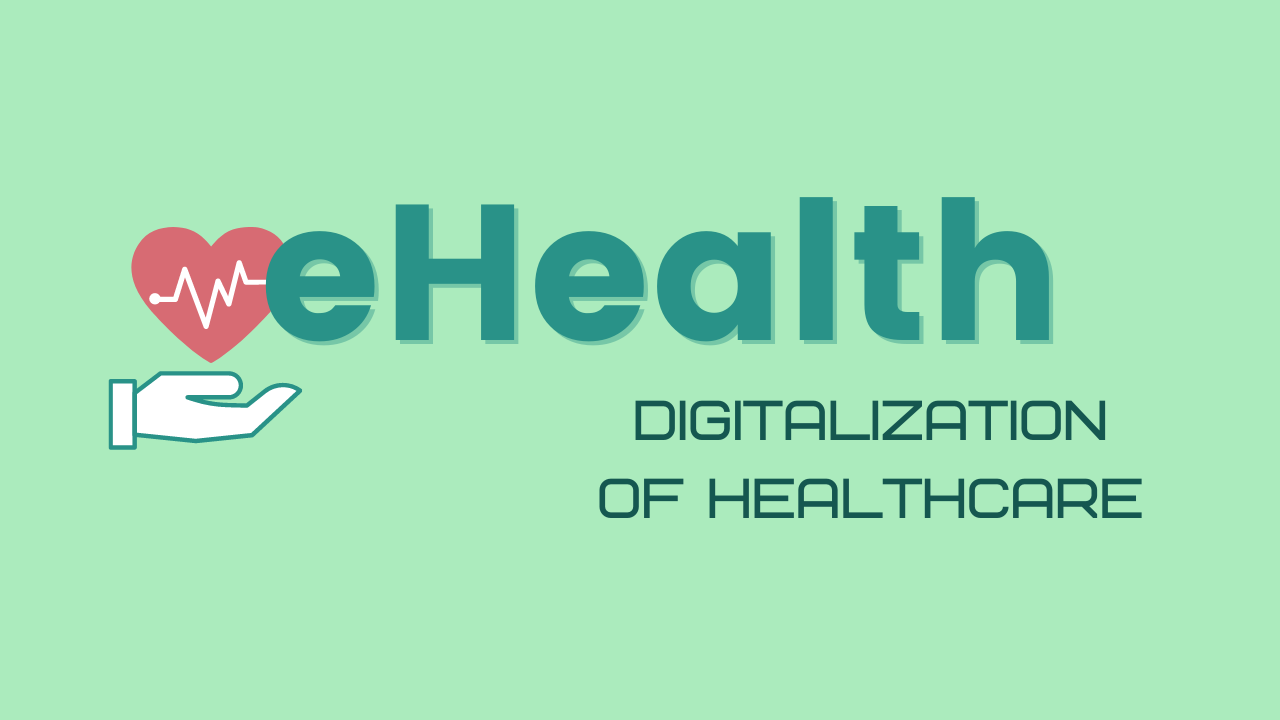eHealth
eHealth
Blog Article
eHealth
Overview
eHealth, also called digital health or Health care engineering, refers back to the use of Digital communication and data technology from the healthcare sector. It encompasses a wide range of technologies and purposes geared toward increasing the efficiency, efficiency, and quality of healthcare shipping.
Targets of eHealth
The key aims of eHealth can be summarized as follows:
Improved Use of Health care: By leveraging electronic technologies including telemedicine and distant affected individual monitoring, eHealth aims to enhance use of Health care solutions for individuals living in distant spots or with limited mobility.
Enhanced Good quality of Treatment: As a result of tools like electronic wellness data (EHRs) and medical conclusion support methods (CDSS), eHealth seeks to boost the caliber of care by facilitating correct and timely data exchange amid Health care industry experts.
Client Empowerment: By furnishing patients with access to their medical records, personalized well being applications, and on line academic methods, eHealth empowers individuals to consider an active role in managing their particular wellbeing.
Price tag Performance: Making use of digital platforms may also help cut down administrative prices affiliated with paper-centered devices even though enabling efficient coordination amongst distinct stakeholders within the healthcare ecosystem.
Crucial Applications of eHealth
Quite a few critical programs contribute to acquiring the aims outlined previously mentioned:
Electronic Health and fitness Data (EHRs):
EHRs are digital variations of sufferers' healthcare documents that could be very easily accessed by licensed healthcare vendors involved with a affected person's treatment. They provide an extensive check out of the individual's medical heritage, lab outcomes, remedies prescribed, allergic reactions, and other suitable clinical knowledge.
Telemedicine:
Telemedicine entails providing Health care remotely by means of online video conferencing or cellphone phone calls. It enables Health professionals to consult with sufferers who can't physically stop by hospitals or clinics as a result of geographical constraints or mobility challenges.
Mobile Wellness (mHealth) Applications:
mHealth applications are smartphone applications that supply several Health care solutions, for example monitoring vital indicators, reminding sufferers to acquire medications, offering use of wellbeing education components, and facilitating conversation with Health care suppliers.
Distant Affected individual Monitoring (RPM):
RPM enables healthcare specialists to watch a individual's crucial symptoms and various health parameters remotely utilizing wearable gadgets or sensors. This enables early detection of health problems and timely interventions.
Health Info Exchange (HIE):
HIE involves the protected sharing of affected individual details throughout unique Health care companies, making certain seamless coordination and continuity of care between vendors in various configurations.
Medical Determination Assist Techniques (CDSS):
CDSS leverage artificial intelligence algorithms to analyze professional medical details and support healthcare experts in making proof-dependent choices concerning analysis, get more info cure strategies, drug interactions, and even more.
Well being Wearables:
These are wearable equipment like Exercise trackers or smartwatches that will collect physiological details on someone's physical exercise routines, coronary heart fee styles, rest high quality, plus more.
Advantages of eHealth
The adoption of eHealth provides quite a few Positive aspects for each persons and the overall Health care system:
Enhanced Performance: eHealth streamlines administrative duties by reducing paperwork and enabling the electronic Trade of information between stakeholders involved in affected individual care.
Improved Communication: Digital overall health tools facilitate productive communication amongst patients and their Health care vendors although also advertising and marketing collaboration among diverse experts involved in a individual's procedure strategy.
Use of Specialised Treatment: Telemedicine enables sufferers residing in distant spots or underserved communities to consult with specialist Medical professionals who is probably not bodily present nearby.
Timely Interventions: By way of distant checking units or cell applications that provide alerts or reminders for medication adherence or stick to-up appointments, eHealth will help protect against troubles by facilitating early interventions.
Enhanced Individual Results: By furnishing convenient entry to health care data on the net coupled with individualized wellness steering, eHealth empowers clients to actively interact in their own individual Health care and take care of Long-term ailments proficiently.
Difficulties and Considerations
Although the implementation of eHealth comes with numerous benefits, it also offers troubles and worries that must be dealt with:
Privateness and Protection: Safeguarding affected person information from unauthorized obtain is a big problem within the electronic wellbeing landscape. Robust security steps, compliant with pertinent privacy restrictions, has to be implemented to guarantee info confidentiality.
Interoperability: Different healthcare methods and purposes might not usually seamlessly talk to each other due to deficiency of interoperability requirements. Making sure effective Trade of information throughout platforms is essential for in depth individual treatment.
Digital Divide: Not All people has equal use of electronic technologies or possesses the required electronic literacy capabilities essential for utilizing eHealth applications efficiently. Bridging the electronic divide gets to be important to be certain equitable entry to Health care products and services.
Regulatory Compliance: The dynamic nature of know-how frequently surpasses present regulatory frameworks. To completely leverage the advantages of eHealth when safeguarding patient rights, rules will need to maintain pace with technological improvements devoid of stifling innovation.
Summary
eHealth performs a pivotal function in modernizing Health care shipping and delivery by harnessing technological know-how for improved access, top quality of care, individual empowerment, and value effectiveness. The common adoption of Digital interaction applications, telemedicine services, mobile well being apps, remote checking systems, as well as other ground breaking alternatives contributes towards a far more related and affected individual-centered method of Health care provision. On the other hand, addressing troubles relevant to privateness safety, interoperability specifications compliance bridging inequality gaps in World wide web accessibility are crucial measures toward achieving the full opportunity of eHealth.
